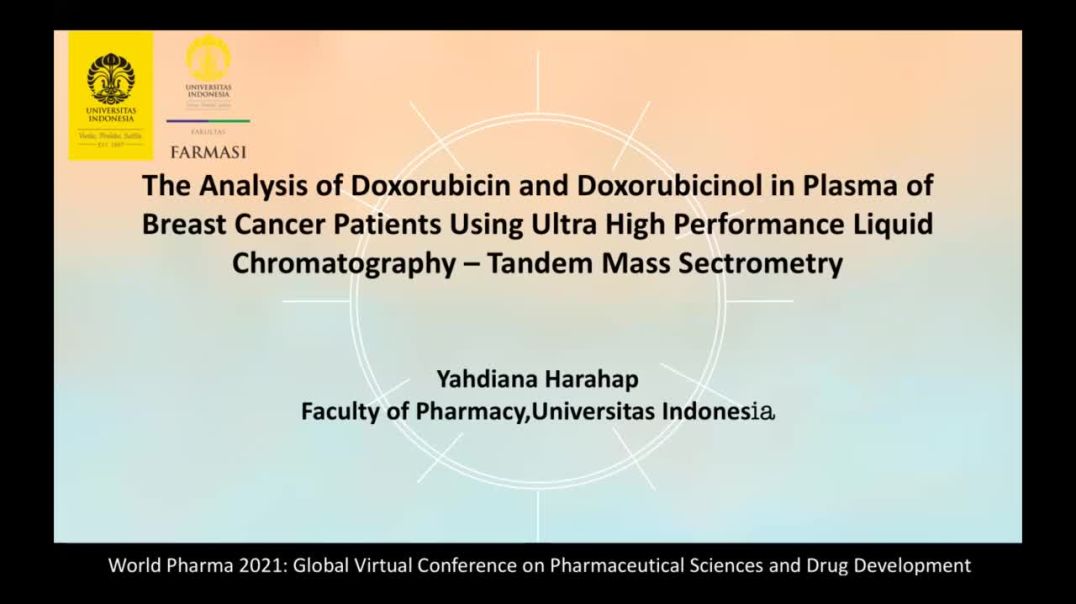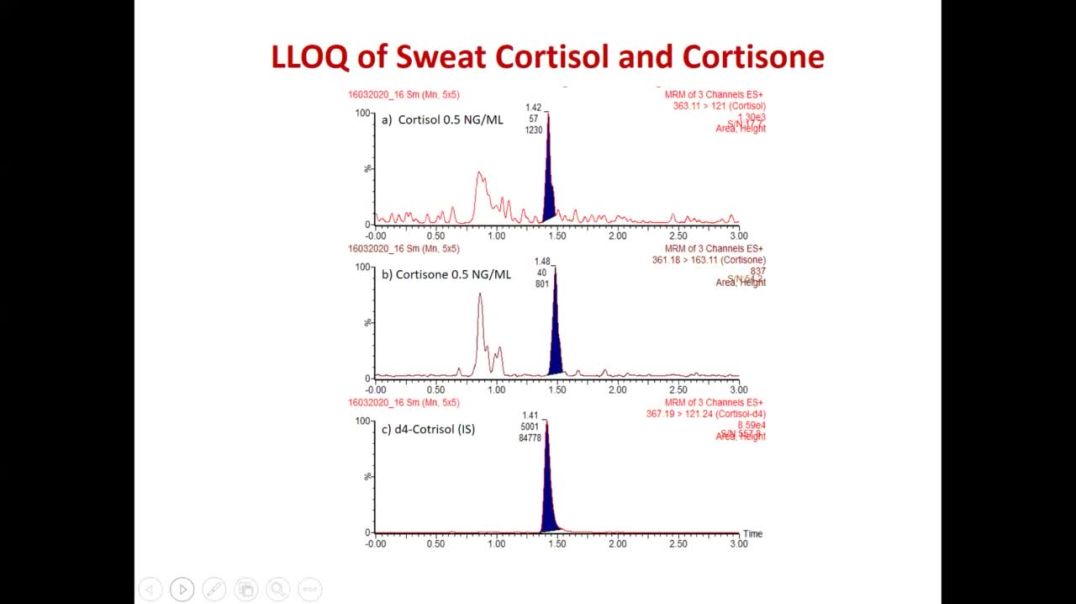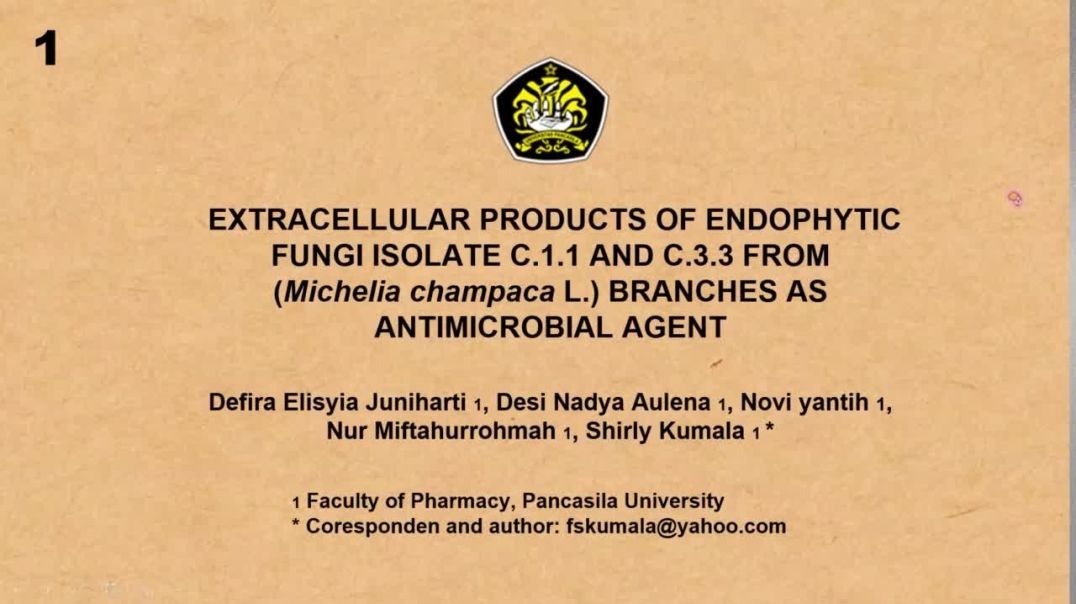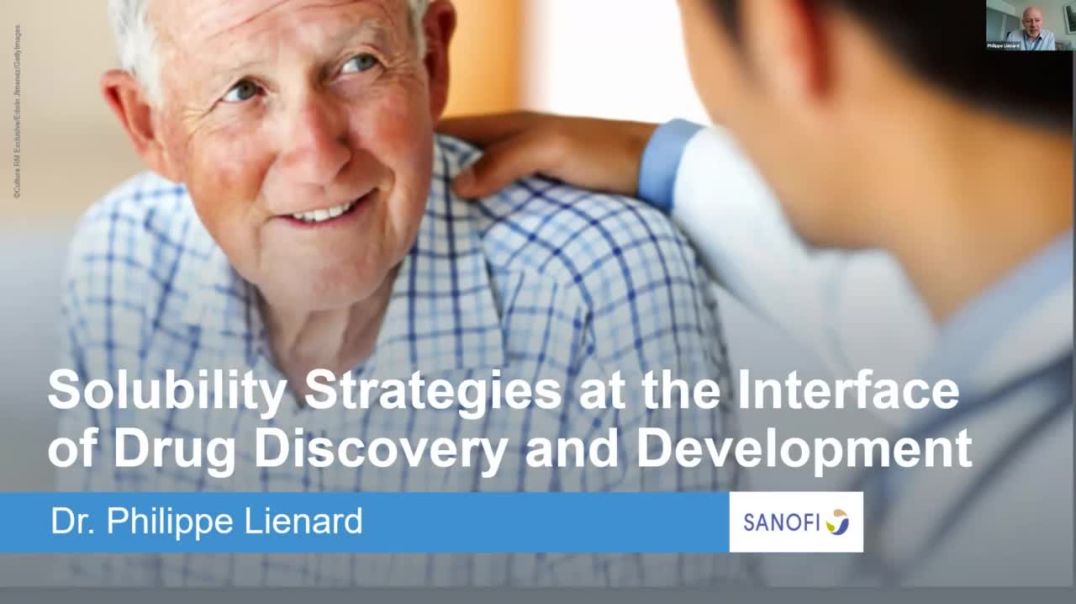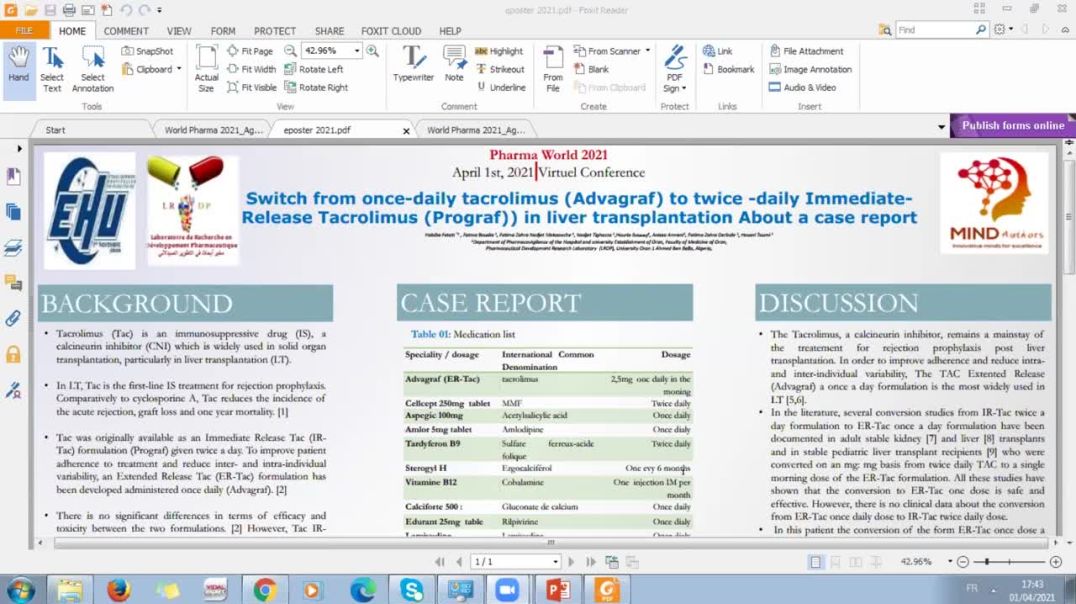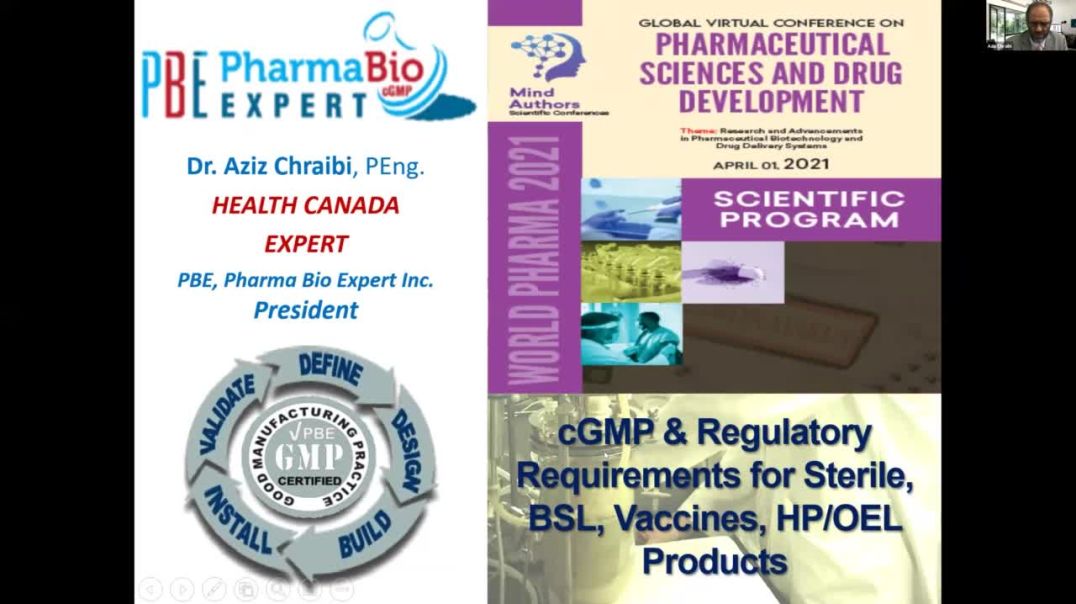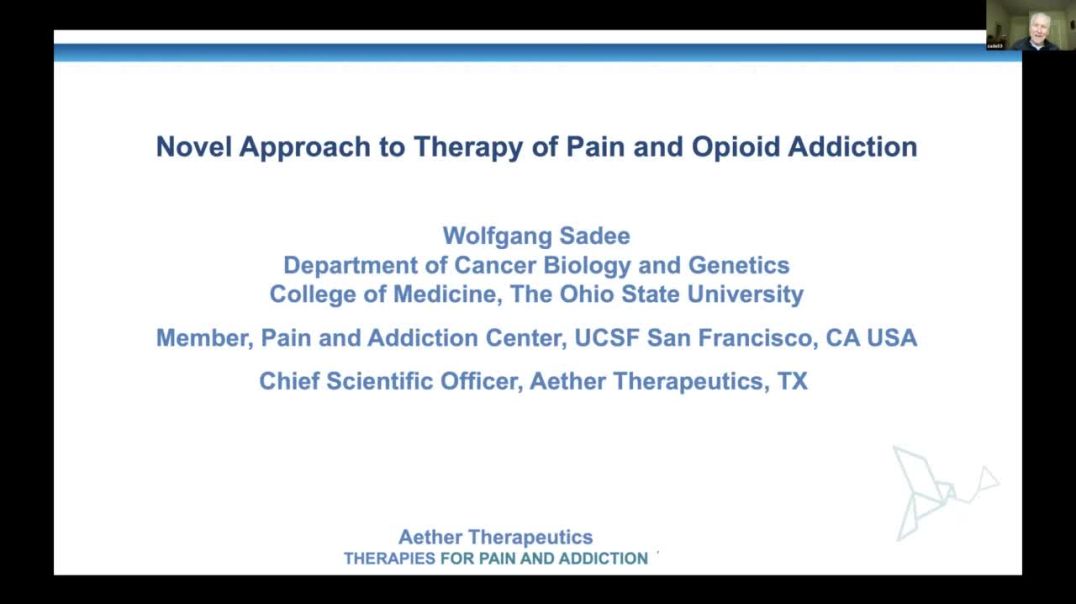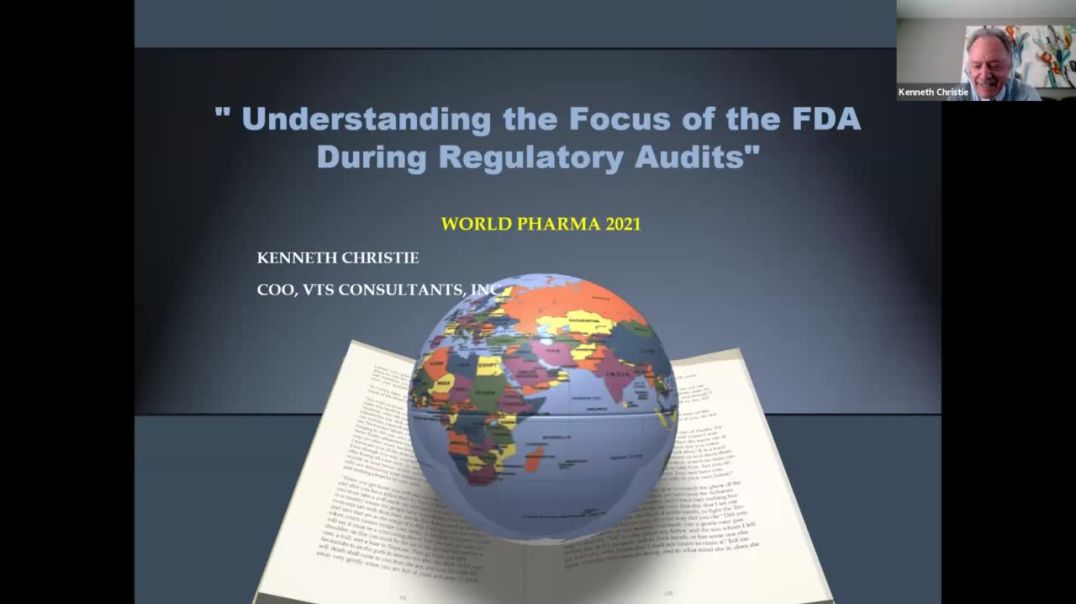Pharmacy
Summary :
Doxorubicin is an anthracycline antibiotic used as an anticancer agent. Longterm use of this anticancer agent could accumulate its metabolite, doxorubicinol, and cause cardiomyopathy, due to its cardiotoxicity. This cardiotoxic effect depends on the amount of doxorubicin and doxorubicinol accumulated in the body. This study aimed to analyze doxorubicin and doxorubicinol levels in the blood plasma of breast cancer patients. Methods: Participants of this study were 30 breast cancer patients who had received doxorubicin in their therapy regimen. The samples were analyzed using ultra-high performance liquid chromatography-tandem mass spectrometry (LC-MS/MS), with the Acquity UPLC BEH C18 Waters chromatography column (2.1 x 100 mm : 1.7 μm). Plasma (250 μL) samples were prepared by protein precipitation, using methanol. The mobile phase consisted of 0.1% acetic acid (eluent A) and acetonitrile (eluent B), with gradient elution; the flow rate was 0.15 mL/min and runtime, 7 min.
About Author :
Yahdiana Harahap has completed her PhD at the age of 39 from Department of Pharmacy, Institute Technology Bandung, Indonesia. Now she is the Head of Bioavailability and Bioequivalence Laboratory Faculty of Pharmacy, Universitas Indonesia. Prior to this position, she was the Dean of Faculty of Pharmacy, Universitas Indonesia. She has published 77 papers published in International Journals with scopus index. She has been invited to be the speakers in many international conferences, especially in the field of BA/BE and Bioanalysis technique. She currently serves as an expert at Indonesia National Agency of Drug and Food Control, spesifically in BA/BE evaluation.
Summary :
The main chemical constit¬uent of high molecular (>1000 kDa) water-soluble preparations from Symphytum asperum, S.caucasicum, S.officinale, S.grandiflorum, Anchusa italica, Cynoglossum officinale and Borago officinalis (Boraginaceae) according to data of liquidstate 1H, 13C NMR, 2D 1H/13C HSQC, 2D DOSY and solid-state 13C NMR spectra was found to be poly[oxy-1-carboxy-2-(3,4-dihydroxyphenyl)ethylene] or poly[3-(3,4-dihydroxyphenyl)glyceric acid] (PDPGA). The polyoxyethylene chain is the backbone of this polymer molecule with a residue of 3-(3,4-dihydroxyphenyl)glyceric acid as the repeating unit. PDPGA as a 3,4-dihydroxyphenyl derivative of poly(2,3-glyceric acid ether) belongs to a class of an acidic polysaccharides [poly(sugar acids)] as well. Oligomers of PDPGA was synthesized by enzymatic ring opening polymerization of methyl 3-(3,4-dibenzyloxyphenyl) glycidate using lipase from Candida rugosa. The enzymatic polymerization is a “green” chemistry alternative to classic chemical synthesis as it utilizes processes that minimize the use and generation of hazardous substances. That is why it is the method of preference for the synthesis of biologically active natural polyether analogues. Enzymatically obtained oligomers cause interest for diverse biological tests. Hyaluronidase (Hyal-1) degrades high molecular mass Hyaluronic acid into smaller fragments which have pro-inflammatory effects. PDPGA possesses the ability to inhibit the enzymatic activity of Hyal-1 completely. Consequently, PDPGA exhibited anti-inflammatory efficacy. PDPGA exerted anticancer activity in vitro and in vivo against androgendependent and -independent human prostate cancer (PCA) cells via targeting androgen receptor, cell cycle arrest and apoptosis without any toxicity, together with a strong decrease in prostate specific antigen level in plasma. Thus, PDPGA was identified as a potent agent against PCA without any toxicity.
About Author :
Vakhtang Barbakadze has his expertise in isolation and structure elucidation of a new series of biologically active plant polyethers and obtaining of their synthetic analogues, which are endowed with pharmacological properties as anticancer agents. In 1978 and 1999 he has completed his Ph.D and D.Sci., respectively. In 2006 up to date he is the Head of Department of Plant Biopolymers at Tbilisi State Medical University Institute of Pharmacochemistry. In 1996 and 2002 he has been a visiting scientist at Utrecht University, The Netherlands, by University Scholarship and The Netherlands organization for scientific research (NWO) Scholarship Scientific Program, respectively. He has published more than 100 papers in reputed journals. In 2004 he was Georgian State Prize Winner in Science and Technology.
Summary :
A simple reliable ultra-performance liquid chromatography tandem mass spectrometric assay for measurement of cortisol and cortisone in human sweat was developed and validated. Sweat samples 50 μL spiked with cortisol d4 as internal standard was used to measure the levels of cortisol and cortisone simultaneously. Analysis was performed using a reversed phase Atlantis dC18 column and a mobile phase of 2.0 mM of ammonium acetate: acetonitrile (50:50, v:v). The components of interest were detected and quantified in the positive ion mode of electrospray ionization using multiple reaction monitoring transitions set at mass to charge (m/z): 363.11 → 121.00, 361.18 → 163.11, and 367.19 → 121.24 for cortisol, cortisone and IS, respectively. The relationship between cortisol concentration and peak area ratio (cortisol /IS) was linear over the range 0.5 - 50 ng/ml in phosphate buffered saline. Quality control samples were prepared by spiking cortisol and cortisone solution on sweat at concentration 1.5, 25, and 45 ng/ml. The intra- and interday coefficient of variations and bias were within the acceptable limits. The method was successfully used to monitor the levels of cortisol land cortisone levels in sweat samples obtained from healthy volunteers.
Summary :
Michelia champaca L. is known to have efficacy as an antimicrobial, antioxidant, and anticancer. In general, endophytic fungi that live in plant tissues is capable of producing secondary metabolites as their host plant. The objective of this research is to examine the antimicrobial potential of endophytic fungi isolates C.1.1 and C.3.3 from (Michelia champaca L.). Method first isolates obtained from previous research was rejuvenated on PDA (Potato Dextrose Agar). Fermentation was carried out on each isolate for 12 days. The fermented supernatant was then extracted partially with n-hexane, ethyl acetate, and n-butanol solvent. Finally the extract was then concentrated and tested for antimicrobial activity using microdilution methods. The antimicrobial activity result showed that n butanol extract of Champaca branches was able to inhibit the microbial growth with Minimum Inhibitory Concentration(MIC) and Minimum Bactericidal Concentration (MBC) in Staphylococcus aureus ATCC 6538 (12.5%), Escherichia coli ATCC 8739 (12.5%), Methycillin Resistant Staphylococcus aureus (12.5%) and for the Candida albicans ATCC10231 (50%) in isolate C1.1. However isolate C.3.3 had less activity in Staphylococcus aureus ATCC 6538 with MIC and MBC 25%. The conclusion, both endophytic fungi isolates of Michelia champaca branches had the potential to inhibit the growth of pathogenic microbes.
About Author :
Dr. Shirly Kumala has completed her PhD from Biomedical Faculty, University of Indonesia, Jakarta. She is the Dean of Pharmacy Faculty, Universitas Pancasila, Jakarta, Indonesia. She has published more than 28 papers both International and National Journals and has been serving as a reviewer in Journal of Pharmacy.
Summary :
Nowadays, a large increase in CMC budgets and extended development time cycles are observed in small molecule projects. In the research phase, the drug molecule candidates are selected according to multi-criteria e.g. activity, selectivity, metabolism stability…and should be selected rationally according to “developability” criteria to expedite timeline, limit budget and avoid potential hurdles in the subsequent development phases. However, during drug candidate optimization phases, the low solubility has become one of the most frequent issues that prevent “formulability” into conventional dosage forms. Also, safety studies are usually problematical during of the preclinical derisking for clinical development with these limited solubility candidates. This lecture describes, in a comprehensive mode, strategies to alleviate solubility deficits at the interface between drug research and development. Solubility criteria to apply on drug candidate will be detailed. Ambitious strategies on drug candidate and concrete case studies to improve “formulability” or derisk development issues will be described.
About Author :
Philippe Lienard obtained his PhD in organic chemistry at the CNRS, French National Research Center, in Pr Husson’s team, in 1991. After having performed a post-doc in the prestigious Pr Oppolzer’s laboratory in Switzerland, he joined SYNTHELABO in 1993 in chemical development. He occupied several positions including Head of Pilot Plant for 12 years. In 2003, He was expatriated in the USA for 3 years for SANOFI, as Chemical Development Director. Back to France in 2006, he has been working within early Pharmaceutical Sciences Department for 10 years and he’s currently Pre Development Science leader for several programs at the interface of Research and Development.
Summary :
Tacroclimus is an immunosuppressive drug widely used for the prevention of rejection in organ transplants. It is marketed in two forms: Prograf administered twice a day and Advagraf which allows only one administration per day. Advagraf is often used in liver transplantation. Through this clinical case, we demonstrate the role of the therapeutic drug monitoring in dosage optimization during the switch tacrolimus from the Advagraf form to the Prograf form. This is a 60-year-old patient who underwent liver transplantation in 2014 treated with Advagraf 2.5 mg once in the morning. The residual CO concentration was 7 ng / ml. Due to the unavailability of advagraf, this drug was switched to the prograf form on 06/15/2020 at the same dosage 2.5 mg / d in two doses (1.5 mg in the morning and 1 mg in the evening ). Co increased from 7 to 11 ng / ml, AUC was 194 ng.h / ml [120-150]. When substitution of Advagraf with Prograf, C0 monitoring should be regular and close and dosage adjustments should be made to ensure that a similar systemic exposure is maintained.
About Author :
Habiba Fetati PharmD and Master assistant in Pharmacology at the Pharmacovigilance department of the Hospital and University Establishment of Oran and a member of the Pharmaceutical Development Research Laboratory (LRDP), Oran1 university Ahmed Ben Bella, Oran, Algeria.
Summary :
the epidemic of Covid-19 has created generalized psychosis and anxiety. This could be linked, on the one hand to the high mortality observed in the word, and the other hand to the absence of specific therapy. Faced with this situation, many substances have been used without medical advice. The objective of this study was to evaluate the practice of self-medication in COVID-19 situation in Oran. Materials and methods : this is an observational cross-sectional survey carried out by an anonymous electronic questionnaire and distributed, by email, to pharmacist belonging to the regional ordinal section of pharmacist in Oran. The answers were analysed by the software Statistical Package for the Social Sciences (SPSS). Results : A total of 69 responses were obtained. The proportion of pharmacists who noticed an increasing trend in self-medication was 58,0%. About a quarter of pharmacist had observed an increase in self-medication with hydroxychloroquin, at least no toxicity secondary to the use of this drug was observed. In this COVID-19 epidemic situation, 91.3% of the study sample noted an increase in the use of vitamins and food supplements with frequent consumption of vitamin C at 1g/day as well as other vitamin comlexes based on vitamin D, vitamin B9 and iron. Conclusion : Our study showed that during COVID-19 the tendency to selfmedication increased. Self-medication with hydroxychloroquin was observed during this pandemic, although the use of other substances such as vitamins and food supplements was more frequent.
About Author :
Fatma Boudia PharmD and Ph D in Pharmacology, Unit head of the Pharmacokinetics and TDM at the Pharmacovigilance department of the Hospital and University Establishment of Oran , Algeria. the head of pharmacogenetics unit at the Pharmaceutical Development Research Laboratory (LRDP), Oran1 university Ahmed Ben Bella, Oran, Algeria.
Summary :
Both the mind and the body react and respond to changes in external and internal environments. Current drugs alter blood chemistry and neurological activity, changing overall awareness and perception of surroundings. However, if a patient’s eyes have a mismatch between right and left retinal circuitry, sympathetic nervous system activity can often not be sufficiently calmed with only medications. Balancing mismatched perceptions with eyeglasses can directly have an effect on both neurological and biochemical activity, affecting neurovascular coupling and general patient comfort. This method of selectively stimulating retinal tissue to affect brain activity is a way to alter external sensory signals, something drugs can not do on their own. Currently, there are known direct retinal connections with the hypothalamus, the dorsal raphe, the superior colliculus (which sends some signals to the amygdala) and obviously, the visual cortex. Eyeglasses are traditionally used for eyesight at a cortical level, but subcortical limbic and brainstem connections influence the cortical activity. Retinal activity differs depending on which section is activated, further suggesting that using eyeglasses to selectively stimulate retinal sections is important. Changes in noradrenaline, serotonin and dopamine activity can be modulated via eyeglasses. The two catecholamines in turn affect insulin and calcium channel activity. The serotonin shifts affect anxiety levels. Typically eyeglass prescriptions emphasize clear eyesight by angling light onto the macular region, assessed using stationary targets – letters on a chart. The synergistic effect of Mind-Eye prescription glasses designed for non-macular activity is useful to help mitigate symptoms in many diseases noninvasively.
About Author :
Deborah Zelinsky, O.D., is an optometrist internationally noted for her work in retinal processing. She founded The Mind- Eye Institute in Northbrook, Illinois, where she teaches optometrists to prescribe individualized eyeglasses for an oftenoverlooked peripheral portion of eyesight. The peripheral retina has direct interactions with the brainstem and limbic system in addition to eyesight pathways. Those Brainwear eyeglasses modify overall awareness, biochemistry, and eyeear interactions. Her patients present with a variety of conditions, ranging from autism, epilepsy, attention and learning problems to strokes, neurodegenerative disorders, and brain injury. She serves on the board of the Mind-Eye Institute and the Society for Brain Mapping and is a community leader with the Society for Neuroscience. More information can be found at www.mindeye.com.
Summary :
This presentation will cover the up to date according our amazing and innovative approach GAPA (Gap Analysis & Preventive Actions) on cGMP regulations expectations, industry trends and best practices related to design guidelines of Sterile/Aseptic Manufacturing Facilities including layout, sanitary process equipment, clean utilities and pharmaceutical support systems, C&Q, as well as the control quality, quality system requirements and related procedures. This process will be supported by the inclusion of Risk Management strategies (see related ICH Q9 approach workshop) to meet qualification and validation requirements as well as to deal with Biosafety Level of biological compounds according an amazing and innovative approach RAPA (Risk Analysis & Preventive Actions). Such as reported by M. Steven S. Kuwahara: “About 45% of the recalls of drugs and devices are due to design problems”.
About Author :
Dr. Aziz Chraibi, PEng., after having completed his studies in chemical & processes engineering with ENSIACET college of Toulouse (1986), and then a masters at the INP of Toulouse, followed by a thesis doctorate at the University of Perpignan (1990) which was postulated for the best thesis of CNRS award in 1990, began a career of more than 24 years in the pharmaceutical consulting, cGMP compliance and design review, audit and PAI (Pre- Approval Inspection) to meet the good manufacturing practices (cGMP) from Health Canada, EMA and FDA as well as standards such as ISO-14644, ASME-BPE, USP797, USP, EuPh, HSE, NFPA, ATEX, OSHA, ISO, ICH Q9, ASTM 2500, ISPE, ISO-22000, ISO-8573. In 2007, he was registered as Health Canada Scientific and MAPAQ Expert to carry out GMP compliance audit of the pharmaceutical, biotech, food facilities. It has in its assets more than 300 multidisciplinary projects successfully completed in Canada.
Summary :
Cannabinoids have emerged as potential agents for cancer management administered either as monotherapy or in combination with conventional antineoplastics. Cannabidiol (CBD) is one of the most promising cannabinoids due to its lack of psychoactive effects. However, its low aqueous solubility and stability problems hinder its parenteral administration. The use of polymeric microparticles could resolve these challenges and allows an extended CBD release after a single administration, which is useful in long term treatments as required in cancer. This work aimed the potential use of cannabidiol in solution (CBDsol) and encapsulated in polymeric microparticles when combined with paclitaxel and doxorubicin in the treatment of breast and ovarian cancer. PLGA-502 was selected as the most suitable polymer to develop CBD-loaded microparticles. The developed formulations showed a spherical shape, a particle size around 25 μm, which is suitable for parenteral administration, a high CBD content and a controlled CBD release over 40 days. CBDsol potentiated the antitumor effect of paclitaxel in highly invasive breast and ovarian cancer cells. However, the combination of CBD and DOX was only effective in breast cancer. The best treatment schedule was the pre-administration of CBD followed by its co-administration with paclitaxel or doxorubicin. Using this protocol, the single administration of CBD-loaded- microparticles was even more effective than the daily administration of CBDsol. The combination of CBDsol or CBD-loaded-microparticles and paclitaxel was also evaluated in vivo in the chick chorioallantoic membrane model, confirming the results obtained in vitro. These results demonstrated the potential use of CBD-loaded-microparticles in combination with paclitaxel for breast and ovarian cancer management.
About Author :
Dr. Ana Isabel Fraguas Sánchez received her PhD in Pharmacy from the Complutense University of Madrid, receiving the Doctorate Extraordinary Award from the Faculty of Pharmacy and the “Juan Abello I” thesis prize from the Doctor Academy of Spain. Nowadays, Dr. Fraguas-Sánchez is assistant professor of Pharmaceutics, Biopharmacy and Pharmacokinetics at Complutense University of Madrid. She is author of 17 peer review articles, most of them of the highest quality and have participated in more than 20 scientific conferences. She serves as reviewer of many peer reviewed journals including Molecules, Cancers, Pharmaceutics, Pharmaceuticals, Toxins and International Journal of Pharmaceutics and as co-editor of several specials’ issues in Cancers and Pharmaceutics. She has done several predoctoral and postdoctoral research stages (Italy, Switzerland, and Finland).
Summary :
In several sectors (transportation, flights, energy, insurance) clear risk assessment methods are given. In pharmacovigilance these methods are not defined. There is only high-level guidance available but no support on how to assess unknown risks and what might be acceptable. For example, DILI (drug-induced liver injuries) are a serious risk. Normally, only detected as a signal but not mentioned in standard Risk Management Plans. If it is detected as a signal, several patients have already experienced it. Wouldn’t proactive risk management be better? Koido M et al. found a quick gen test to check for the possibility of experiencing a DILI to a specific drug. It seems that gene tests might bring more light into the darkness of unknown risks. On the other hand, is the additional financial add-on worth the risk reduction? As there are no clear measurable benefit-risk methods provided in the guidelines, it is suggested to think about common risk registers and state-of-the-art technologies to ensure upfront risk detection before signals occur.
About Author :
Master of Science (Biology), currently working as EU-QPPV with 16-years’ of experience in clinical trial management, MedDRA coding, global regulatory reporting and intelligence, periodic report writing, risk management. Worked for pharmaceutical companies and CROs. Speaker for FORUM Institute and Salt&Light Biotech Institute via ARC-Traicoa.
Summary :
Opioid analgesics are effective pain medications but cause addiction and other adverse effects, significantly reducing their therapeutic value. Main strategies for improving pain therapy include development of non-opioid analgesics and opioids with reduced addiction liability; however, the latter approach has met with only partial success. Taking advantage of multiple conformations with distinct signaling pathways attributable to the μ opioid receptor (MOR), biased opioid agonists or agonist-antagonist combinations have promise to treat pain with reduced adverse effects, but addiction liability remains largely unresolved. We have developed 6-naltrexol (6BN), a neutral opioid antagonist with moderate potency and peripheral selectivity, to treat peripheral adverse opioid effects (e.g., constipation). Beyond this application, we now report that 6BN has exceptional potency in selectively preventing the formation of opioid dependence: at low doses (<0.05 mg/kg), 6BN potently prevents the formation of opioid dependence in guinea pigs and mice (Oberdick et al., JPET 350:22 (2016) and Safa et al. Front. Pharmacol. DOI: 10.3389/fphar.2020.613328 (2021)). To account for these results, we have developed a novel receptor model proposing a MOR conformation with high 6BN affinity (Sadee, Molecules 25, 4163; doi:10.3390/ molecules25184163 (2020)). Further results indicate that low-dose 6BN acts as an addiction modulator rather than an antagonist, affording novel opportunities to develop safer pain therapy, well tolerated opioid use maintenance, facilitated detoxification protocols, and prevention of neonatal opioid withdrawal syndrome. Supported by grants from the NIH: NICHD R21, NIDA SBIR, NCATS HEAL CRADA
Summary :
All drug manufacturers, biotechnology, medical devices and cosmetic companies are subject to, and are routinely audited by the FDA, if your product is sold in the US. Getting through a regulatory audit is a combination or being both prepared and having an understanding of the approach used by auditors and what will be their areas of focus. In addition, the most common cited GMP deficiencies can provide companies with a roadmap as to how their own procedures and processes may stand up during such audits. This presentation will provide a highlight of what are the approaches used by regulatory auditors, what are the common areas of focus, and what are the answers and actions to avoid. Additionally, the most commonly cited GMP deficiencies during 2020, will be reviewed and discussed, such as insufficient or lack of investigations for deviations, data integrity, and a lack of defining the responsibilities of the quality unit, to name a few. Realizing that most companies do receive periodic deficiencies or 483s, the attendees will learn several tips as to how best to address the findings.
About Author :
Kenneth Christie has over 30 years of sterile manufacturing and regulatory GMP consulting experience in the areas of Quality Assurance and Validation Management in the pharmaceutical and biotechnology industries. Mr. Christie is currently the Chief Operating Officer for VTS Consultants, Inc. located in Amherst, MA. Specifically, his responsibilities include quality system auditing, supplier qualification, GMP training, and serving as a subject matter expert for aseptic manufacturing processes, equipment and utilities, medical devices, and solid dosage processes on a global basis. Mr. Christie also performs vendor audits, site pre-approval inspections and assists clients with addressing and correcting regulatory observations. Mr. Christie is a speaker and trainer for several professional organizations and is a published author of several articles dealing with the challenges of aseptic processing. Additionally, Mr. Christie served as a member of the ISPE’s Professional Certification (PCC) Commission as an Examination Development Committee (EDC) member.
Summary :
Since the outbreak of the 2019 novel coronavirus disease (COVID-19), the medical research community is vigorously seeking a treatment to control the infection and save the lives of severely infected patients. The main potential candidates for the control of viruses are virally targeted agents. In this short letter, we report our calculations on the inhibitors for the SARS-CoV-2 3CL protease and the spike protein for the potential treatment of COVID-19. The results show that the most potent inhibitors of the SARS-CoV-2 3CL protease include saquinavir, tadalafil, rivaroxaban, sildenafil, dasatinib, etc. Ergotamine, amphotericin b, and vancomycin are most promising to block the interaction of the SARS-CoV-2 S-protein with human ACE-2.
About Author :
Dr. Hai-Feng (Frank) Ji is current a professor of Department of Chemistry, Drexel university. His research interests focus on drug discovery, MEMS devices, nanomaterials for energy and environmental applications, nanopillars and phosphene for energy applications, and surface chemistry. He is currently a co-author of 190 peer-viewed journal articles and book chapters. He has an H-index of 37. He is an editorial board member of several chemistry journals.
